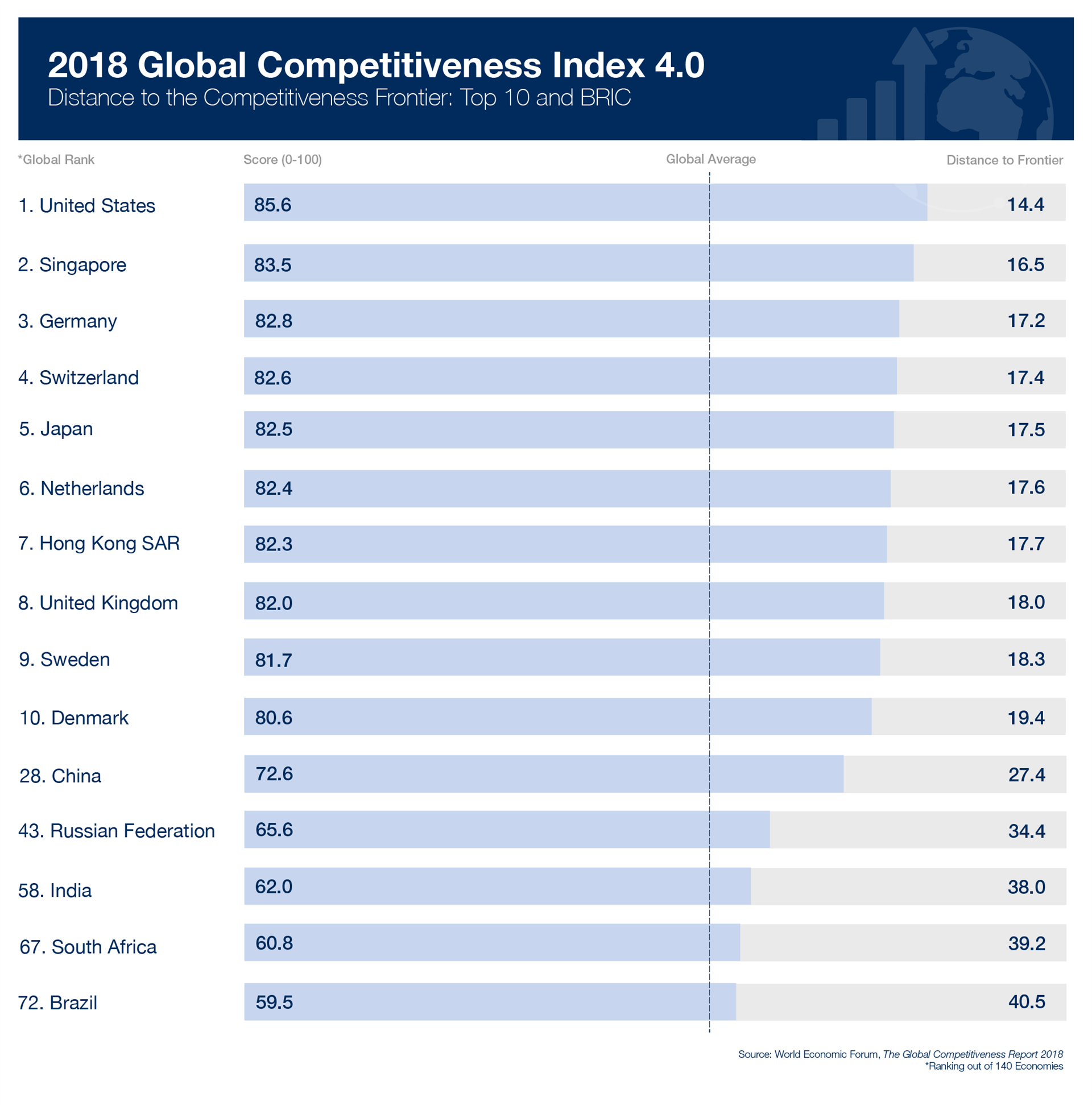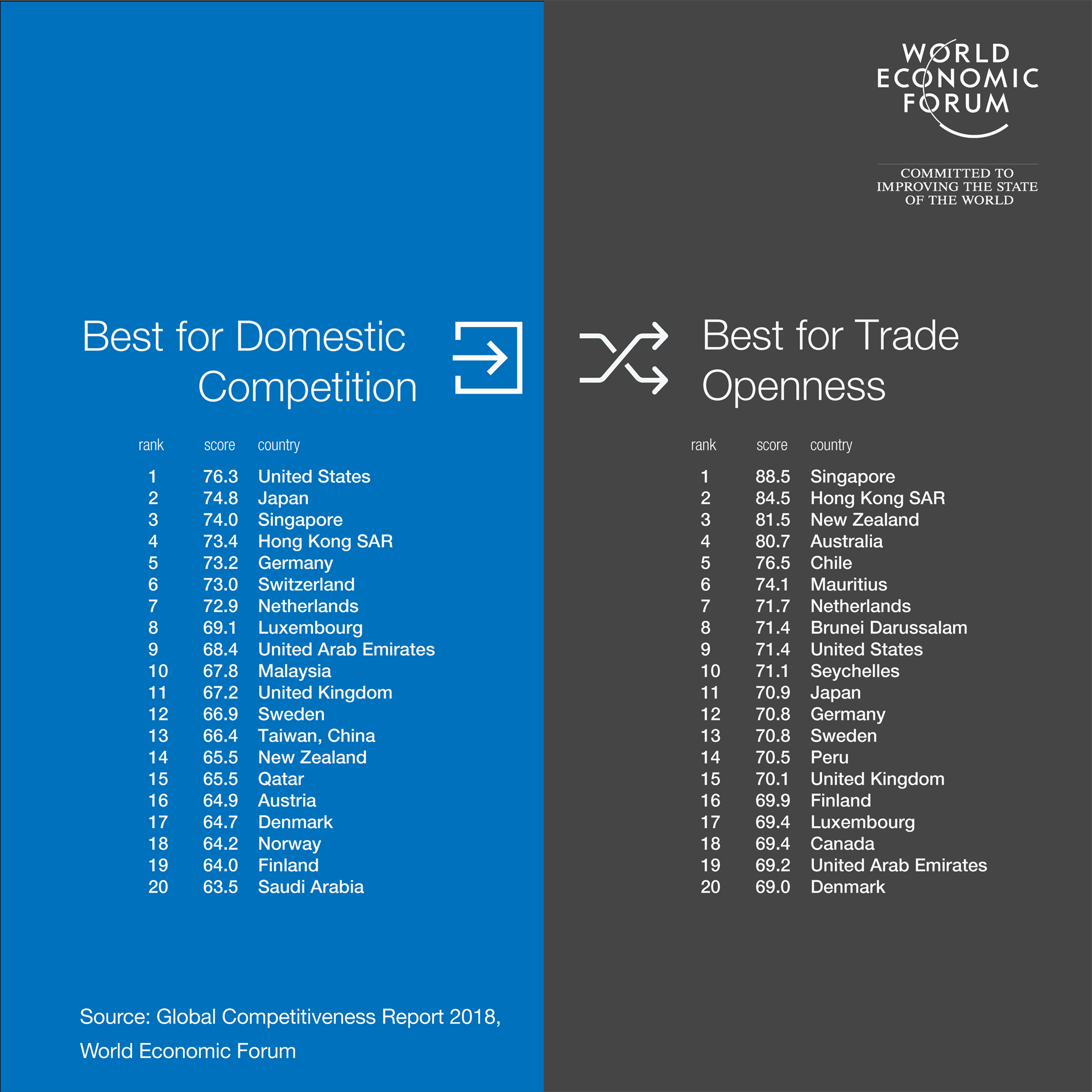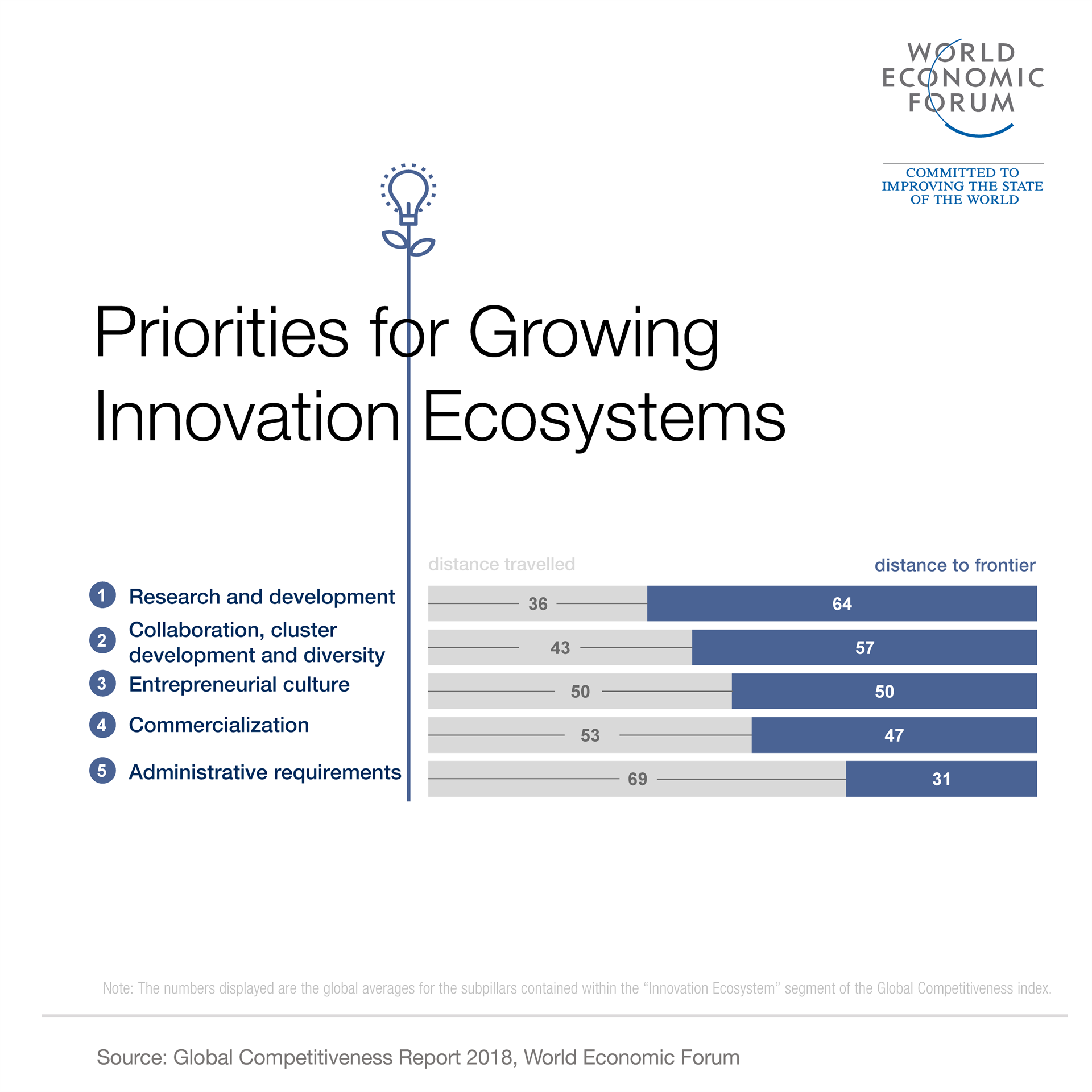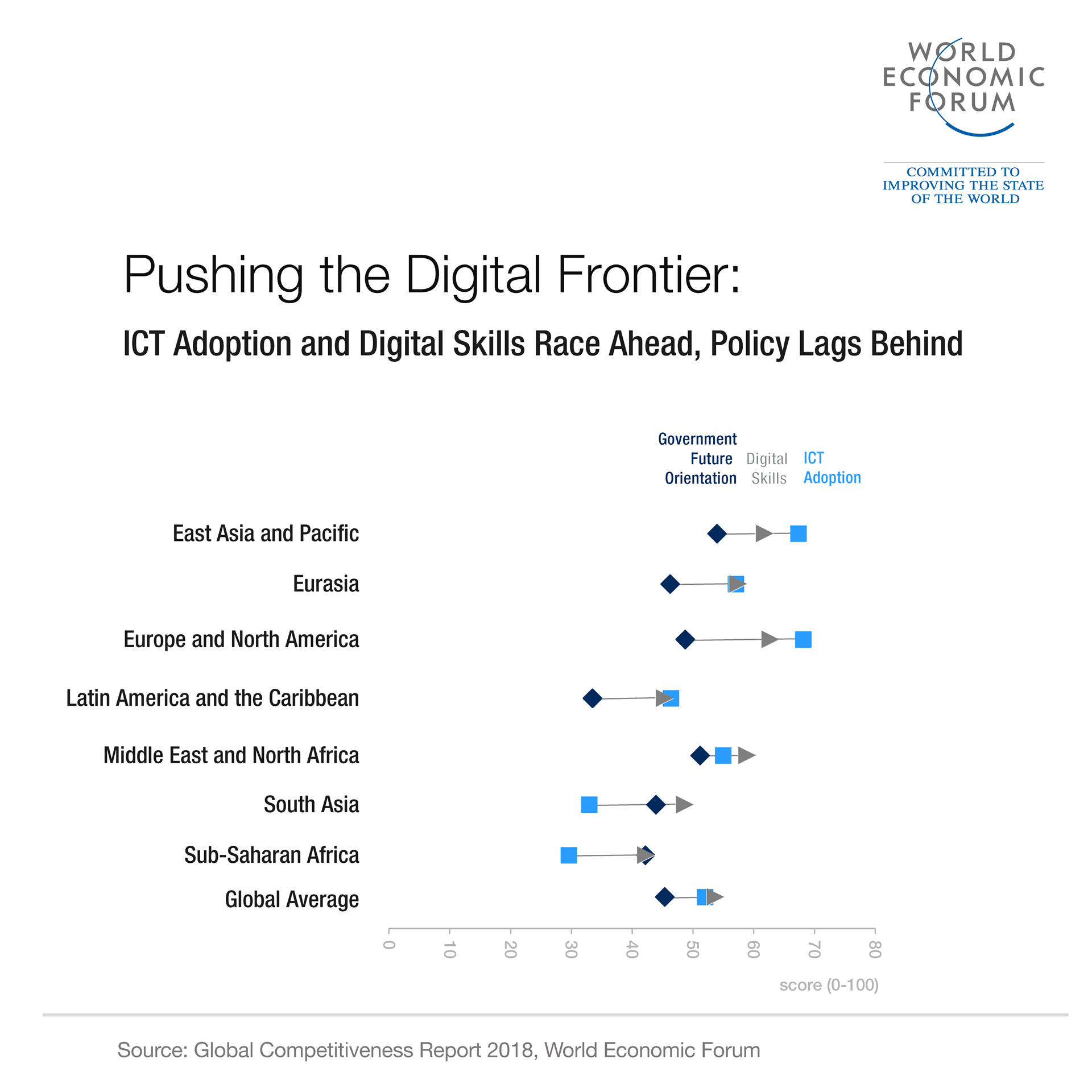by Klaus Schwab & Saadia Zahidi*
Even as globalization has led to unprecedented gains for many from the movement of goods, services, people and ideas, there are those who have lost out – economically, politically or culturally.
This has in part contributed to the rise of polarized political debate and populist, nationalist and, at times, extremist agendas, both in the West and in emerging markets.
Against this context of citizens’ concerns about jobs, inequality and globalization, policymakers are looking for new pathways to prosperity.
We now know more about those pathways –and their nuances. Exactly ten years ago, global headlines were dominated by the financial crisis.
What followed was an erosion of trust in elites and institutions, but also new lessons about which economies bounced back, which ones struggled and why.
More recently, as the Fourth Industrial Revolution has unfolded, it has brought fresh opportunities but also new questions about how economies can best integrate technologies for a faster path to broad-based prosperity.
Additionally, growing job polarization across advanced economies as well as a decline in labour’s share of income in industrialized economies over the last decades has led to a call for more dynamic education systems and labour market policies.
It has also become clear that the manufacturing-led development model that lifted millions out of poverty, most recently in Asia, is unlikely to be viable – or possibly even desirable – in the future.
A wide range of new technology-intensive, high-skilled occupations are expected to be in demand in the future, along with new growth broadly across sectors such as education, health, care, green energy and more, calling for a new approach to “industrial policy” in the digital age.
The World Economic Forum is introducing the new Global Competitiveness Index 4.0 as a much-needed economic compass, building on forty years of experience of benchmarking the drivers of long-term competitiveness and integrating the latest learnings about the factors of future productivity.
The GCI 4.0 is organized into 12 pillars: institutions; infrastructure; ICT adoption; macroeconomic stability; health; skills; product market; labour market; financial system; market size; business dynamism; and innovation capability.
The Index also introduces a new progress score ranging from 0 to 100, with the frontier (100) corresponding to the goal post for each indicator and typically representing a policy target.
This approach emphasizes that competitiveness is not a not a zero-sum game between countries—it is achievable for all countries.

As countries reset their path to competitiveness, there are ten key takeaways for all economies:
1. Competitiveness is not a luxury good.
In fact, all economies must pursue the drivers of productivity, regardless of their current level of income or current areas of strength, if they want to grow faster in the future and build resilience against shocks.
While there is a strong correlation between competitiveness and income level, some economies are over-performers and others under-performers when it comes to putting in place the building blocks of competitiveness at their current level of income.
Economies that under-perform relative to their current income level may have difficulty sustaining that level without improving their competitiveness.
There is no compensability between the twelve levers of competitiveness– a sound financial system cannot compensate for poor physical infrastructure, just as ICT adoption cannot compensate for the lack of an entrepreneurial and innovation ecosystem.
Countries must pursue all twelve avenues but create their own sequencing strategy to balance and focus efforts, taking advantage of cheaper capital and technology.
2. Investing in people is good for social and economic outcomes.
There is no trade-off between social inclusion and a country’s level of competitiveness. In fact, the health, education and skills of a population are among the key drivers of productivity, particularly in the context of economic and technological transformations.
With the right skills, workers can become the agents driving and managing such changes, rather than being displaced by them.
Investing in people can no longer be an afterthought – it is a fundamental building block of growth and resilience in the Fourth Industrial Revolution.
3. Embracing globalization in the 4IR goes beyond free trade.
Openness remains a fundamental driver for competitiveness: more open economies are more innovative and their markets more competitive. However, the definition of openness must look to concepts beyond trade and include the freedom of people’s movement and ideas exchange.
Collaboration across borders is particularly critical for a dynamic innovation ecosystem.
Using such a definition, we find that Singapore, Germany, Netherlands, Sweden, Finland and the United States are some of the most open countries in the world, while Brazil and India emerge as relatively “closed”.

4. But open economies must also embrace social protection.
While openness is a ‘win-win’ between countries it is at times a ‘win-lose’ within countries. This means that even as governments must pursue openness for greater long term prosperity, they must also support those who lose out to globalization.
Attempting to address inequality by reversing globalization is counterproductive.
Instead of protecting specific jobs or the products resulting from those jobs, policies should focus on improving the conditions of those specifically impacted by globalization through redistributive policies, safety nets, investments in human capital, more progressive taxation, and opportunities to transition to new economic opportunities.
5. Creating an innovation ecosystem goes well beyond research and development.
Innovation has become an imperative for all advanced economies and a priority for a growing number of emerging countries.
And yet for 77 of the 140 economies studied, innovation capability is the weakest pillar, with innovation powerhouses, such as Germany, the United States and Switzerland, still outliers.
While scientific publications, patent applications, R&D expenditure and research institutions are all well-established aspects of developing innovation capability, they are not enough.
For good ideas to move through to commercialization, a number of “softer” factors are equally important.
This includes the ability of companies to embrace disruptive ideas (where the US leads), the attitude toward entrepreneurial risk (where Israel leads), diversity of the workforce (where Canada leads), and flat hierarchical structures in companies (where Denmark, Sweden and other Nordic countries lead).

6. Technology offers a path to economic leapfrogging but only in combination with other factors.
While technology is not a silver bullet, it is a vital tool for growth and prosperity so its allocation and governance is critical.
The promise of leveraging technology for economic leapfrogging remains largely unfulfilled. There are, at most, 4.5 billion smartphones in use in the world and more than half of humanity has never gone online. It is vital that economies provide greater access to ICTs to the majority of their populations.
At the same time, it would be misguided to rely on technology alone to solve all problems. For many of the least competitive economies, the root causes of slow growth continue to be the ‘old’ developmental issues such as institutions, infrastructure and skills.
For technology-based leapfrogging to offer a new path to development for low-income economies, these issues cannot be ignored.
7. Institutions still matter.
Weak institutions—defined as including security, property rights, social capital, checks and balances, transparency and ethics, public-sector performance and corporate governance—continue to be the Achilles heel hindering competitiveness, development and well-being in many countries.
For 117 of the 140 economies studied, their institutions pillar performance is a drag on their overall competitiveness score. Governments must pay attention to both traditional and emerging aspects of the institutional environment as a factor of productivity.
For example social capital—a broad concept that captures the quality of personal and social relationships, the strength of social norms and the level of civic participation in society—is highest rated in Australia and New Zealand, while freedom of the press is best rated in Norway and intellectual property protection most advanced in Finland.
8. As do infrastructure and the financial system.
The quality and breadth of transport infrastructure (road, rail, water and air) and utility infrastructure lower transportation and transaction costs and facilitate the movement of goods and people.
Basic elements of such infrastructure are still missing in many economies, encumbering their competitiveness. The financial system is also still an area of relative weakness for several economies.
Finland, Hong Kong SAR, Switzerland, Luxembourg and Norway have the most stable financial markets (all scoring above 95), while India, China, Russia and Italy—all with a score of 84 or less—are among the G20 economies that have specific vulnerabilities in their financial systems.
9. In a time of constant change, there is a need for constant agility.
Amidst the transformations and disruptions brought about by the 4IR, the adaptability and agility of all stakeholders—individuals, governments, and businesses—will be key features in successful economies.
For governments in particular, “future orientation” entails aspects such as adapting legal frameworks to digital business models, providing a stable environment for doing business, responding effectively to change and having a long-term vision. Singapore’s government is the most ‘future-ready’, followed by Luxembourg’s and the United States’.
The United Arab Emirates and four other Gulf countries appear in the top 10, which also features Malaysia. On the other hand, the governments of Brazil, Greece and Venezuela are perceived as among the least ‘future-ready’.

10. Achieving equality, sustainability and growth together is possible – but needs proactive, far-sighted leadership.
There is a worldwide consensus on the need for a more holistic model of economic progress that promotes higher living standards for all, respects planetary boundaries, and does not disadvantage future generations.
While, there is no inherent trade-off between equality and growth, the relationship between performance on the GCI 4.0 and on environmental measures is less conclusive. The most competitive economies have the largest ecological footprints, but they are the most efficient (their footprint per unit of GDP is the lowest).
It is therefore incumbent upon leaders to set longer-term priorities and put in place proactive efforts to create virtuous cycles between equality, sustainability and growth.
*Klaus Schwab is Founder and Executive Chairman at World Economic Forum & Saadia Zahidi is Managing Director, Head of Social and Economic Agendas at World Economic Forum.
**First published in weforum.org




 By: N. Peter Kramer
By: N. Peter Kramer
